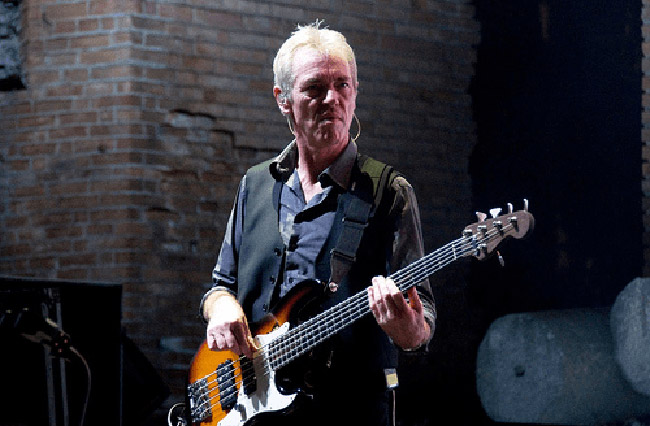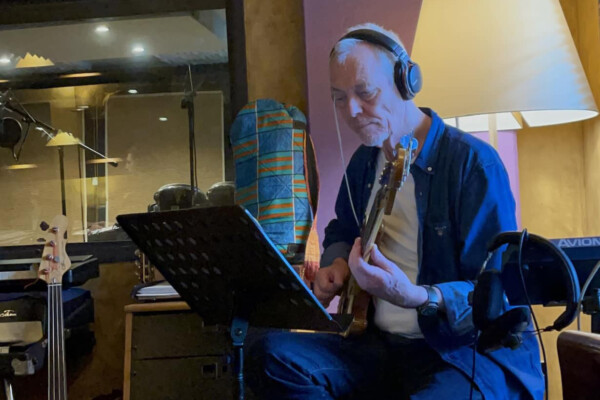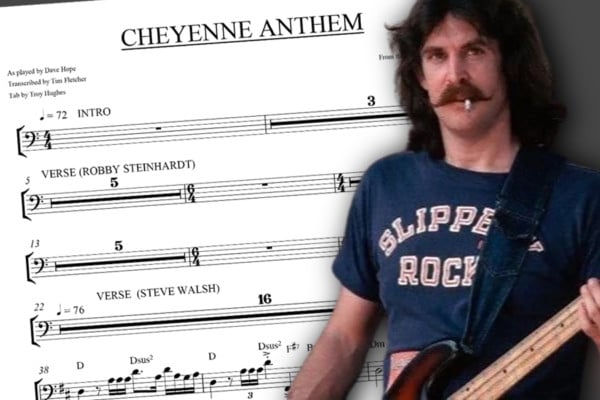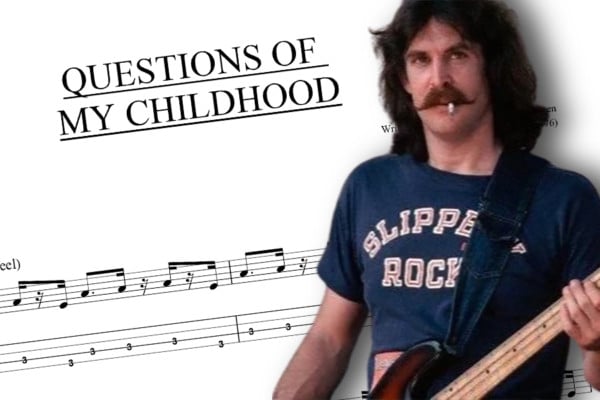Bass Transcription: John Giblin’s Bass Line on “Babooshka” by Kate Bush

Kate Bush came from a very musical family, and at eleven she taught herself to play the piano. Soon after this she began to write songs and at sixteen she recorded a demo of fifty compositions and sent them to prospective record companies, but this did not lead to any offers. However, a family friend had a connection with Pink Floyd guitarist David Gilmour and was able to give him the demo. Gilmour was impressed, and he helped to record and produce some more effective recordings. These were eventually accepted by EMI who signed her but did not begin to record any material for two years. Bush finished school and gigged around the London pub circuit until EMI were ready to begin recording her debut album The Kick Inside (1978). The bassist on this album was Scottish session player David Paton, and he was hired for the follow-up Lionheart (1978), alongside Bush’s former bandmate Del Palmer. For future albums, the singer began to use a wider range of musicians on her sessions that reflected more ambitious and varied musical approaches and hired a number of bassists to contribute to the recording sessions. John Giblin was initially hired to play on the Never for Ever album (1980) to contribute fretless bass on two tracks – “Babooshka” and “Dreaming”. Fretless bass became a common feature of Bush’s work in this period and it has been suggested that it was chosen to create an instrumental ‘male voice’ to contrast with her own. Giblin also contributed to later Bush albums including The Sensual World (1989), The Red Shoes (1993), Aerial (2005), Fifty Words for Snow (2011) and live album Before the Dawn (2016).
Giblin was born in 1952 in Bellshill, a town South East of Glasgow in Scotland, UK. Apart from his work with Bush, Giblin has had a prolific recording career for a variety of different artists, including recordings for disco band Gonzalez, Yes vocalist Jon Anderson, Peter Gabriel, Phil Collins, Chris De Burgh, Hugh Masekela, Mavis Staples, Fish, Scott Walker, Peter Erskine and The Everly Brothers. He has also played on sessions for a number of the ‘James Bond’ film soundtracks. He has performed live with Peter Gabriel, Kate Bush, Annie Lennox and Joan Armatrading amongst others, and he spent time as a member of fusion band Brand X, and later with Scottish rock band Simple Minds, playing on two albums and touring with them between 1985 and 1989. In recent years he has toured with ‘Dire Straits Legacy’, a band made up of former Dire Straits musicians and guests. Giblin has played Zon, Aria, Fender, and Musicman basses.
“Babooshka”
After a four-bar piano intro, the bass enters with a distinctive high melody almost at the limits of the instrument, and Giblin’s intonation is very accurate even this far up the neck. Laying out again for the first half of verse one, the bass-line returns at bar fifteen. Giblin initially keeps the bass line simple, mainly using semibreves and minims, but creates expression with occasional slides and soft vibrato. He also adds more movement on occasion; for example, he uses octave leaps in the descending line in bars 18-19 and then includes a tasteful inversion idea to return to the Eb chord in bar 20 by playing the third (G) before the root.
The first chorus features a flowing arpeggio idea that extends to the tenth behind Bush’s wailing melody, but Giblin returns to more supportive longer tones in between the bigger vocal phrases. After the chorus, Giblin introduces a tasteful rising harmonic idea in bar 32, and a descending one at bar 34, but these are probably overdubs.
In verse two, Giblin contributes a light, high line, but descends again with a melodic triplet-based idea that reflects Bush’s vocal melody, and then re-states the ideas from the first verse. In the chorus at 54, Giblin fills out the three-bar phrases more fully than before, with some triplet runs. In the final chorus at 72, he develops the bass line further, and in bar 78, Giblin again utilizes the sliding harmonic technique, repeating the descending idea from G to Eb. After this, the bass line is taken over by a synth bass sound.
Overall, the track showcases Giblin’s ability to create simple but supportive lines, occasionally adding more rhythmic movement to help push the track along, and also some inventive and flowing melodic ideas. He allows the fretless tone to color the sound on the longer notes, and his use of wider intervals on more extended phrases adds a more melodic feel without disrupting the main vocal idea. Giblin’s work here is a great example of taste and restraint, and knowing when to add complexity, and when to sit back.
Follow along with the transcription and the track:


